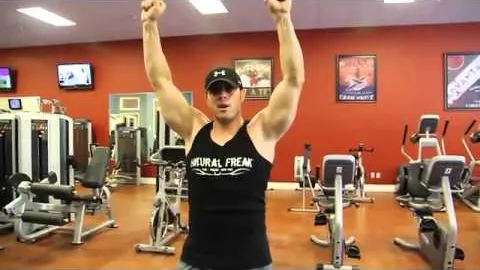
With its focus on strength, balance, and mobility, the dumbbell overhead squat is an effective exercise that targets multiple muscle groups. Whether you're a seasoned athlete or someone looking to improve overall fitness, incorporating this exercise into your routine can yield numerous benefits. In this article, we will provide a step-by-step guide to performing the dumbbell overhead squat correctly, along with its key benefits and variations.
The dumbbell overhead squat is a compound exercise that combines elements of both a squat and an overhead press. By holding a dumbbell or dumbbells overhead while performing a squat, you engage various muscle groups, including the lower body, core, and shoulders. This exercise requires stability, coordination, and flexibility, making it a challenging yet rewarding addition to any workout regimen.
Follow these steps to ensure correct form for the dumbbell overhead squat:
Starting Position: Begin by standing with your feet shoulder-width apart. Hold a dumbbell in each hand, positioning them at shoulder height with your palms facing forward.
Overhead Position: Extend your arms fully overhead, ensuring that the dumbbells are aligned with your ears. Keep your core engaged, and maintain an upright posture throughout the exercise.
Squat: Initiate the movement by bending at the hips and knees, descending into a squat. Keep your weight on your heels and maintain a neutral spine position as you lower your body.
Depth: Aim to squat until your thighs are parallel to the floor or slightly lower, if your mobility allows. Avoid letting your knees cave inwards or pushing them excessively forward.
Rise: Push through your heels, driving upward to return to the starting position. Keep your core engaged and your arms extended overhead throughout the movement.
Repeat: Perform the desired number of repetitions, maintaining proper form throughout the entire set.
The dumbbell overhead squat provides several benefits that contribute to overall strength, stability, and flexibility. Here are some of the key advantages:
Full-Body Workout: The dumbbell overhead squat targets multiple muscle groups simultaneously, including the quadriceps, hamstrings, glutes, core, shoulders, and upper back. Performing this exercise regularly can help develop overall strength and muscular endurance.
Improved Balance and Stability: Balancing the dumbbells overhead forces you to engage your core and stabilizer muscles to maintain an upright position. Over time, this can improve your overall balance and stability, which translates well to other exercises and daily activities.
Enhanced Functional Movement: The squatting motion of the dumbbell overhead squat mimics movements commonly used in daily life, such as bending, lifting, and reaching overhead. By training these movements, you improve your functional fitness and reduce the risk of injury during everyday tasks.
Increased Flexibility: Performing the dumbbell overhead squat requires adequate shoulder, hip, and ankle mobility. Regularly incorporating this exercise into your routine can help improve your flexibility in these areas, reducing the risk of muscle imbalances and enhancing overall mobility.
Core Strength and Posture: The overhead position of the dumbbell overhead squat targets the muscles of the core, helping to improve core strength and stability. Additionally, maintaining an upright posture throughout the exercise helps reinforce proper alignment and can contribute to improved overall posture.
Here are some variations and modifications you can consider to keep your workouts fresh and challenging:
Single-Arm Dumbbell Overhead Squat: Perform the exercise with a single dumbbell held overhead, alternating sides with each repetition. This variation adds an element of rotational stability and asymmetrical strength development.
Goblet Squat: Instead of holding the dumbbells overhead, hold a single dumbbell vertically against your chest while performing the squat. This modification is easier on the shoulders and can be a great starting point for beginners or those with limited shoulder mobility.
Dumbbell Overhead Lunge: Replace the squat motion with a lunge by stepping forward or backward while holding the dumbbells overhead. This variation targets the same muscle groups while adding an additional challenge to your lower-body stability and coordination.
Incorporating the dumbbell overhead squat into your fitness routine can provide significant benefits for overall strength, balance, and flexibility. By following proper form and gradually increasing the challenge through variations, you can continue to progress and achieve your fitness goals. Remember to start with lighter weights and focus on mastering the fundamental movement before progressing to heavier loads. As with any exercise, if you experience discomfort or pain, consult a healthcare professional. Start reaping the benefits of this superb exercise and enjoy your journey to improved fitness and well-being!
If you're looking for a gym, fitness club or yoga studio, you've come to the right place.
You can find information about gyms in your area. Browse catalog of gyms and find gyms with classes which are you looking for.
On gym page you can find simple information like address, phone or website. You can find list of available classes. You can check availability of personal training or small group classes. On place page you can also see information about open hours.
You can find gyms near you with amenities, courts, studios and equipments.
Use our map to find gym at your city or district.
In Gym Navigator you can find list of exercises with movies for many body parts.
You can browse exercises catalog and find exercises the best of you.
You can also find exercises grouped into workout plans, which you can use to improve you body. Each routine show you exercises one by one and give you possibility to count you progress and count down rest time.